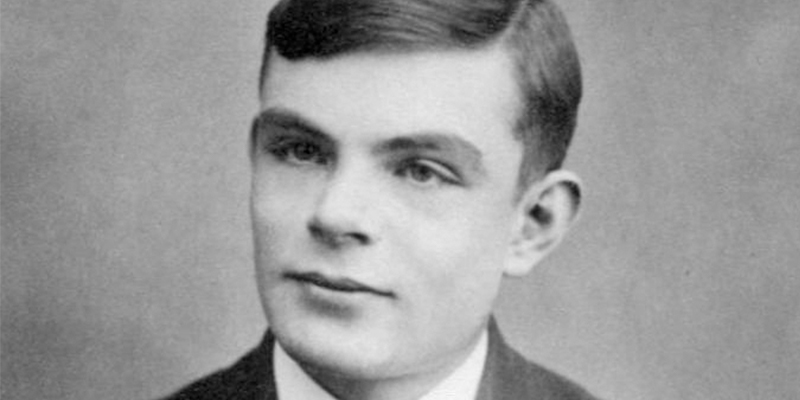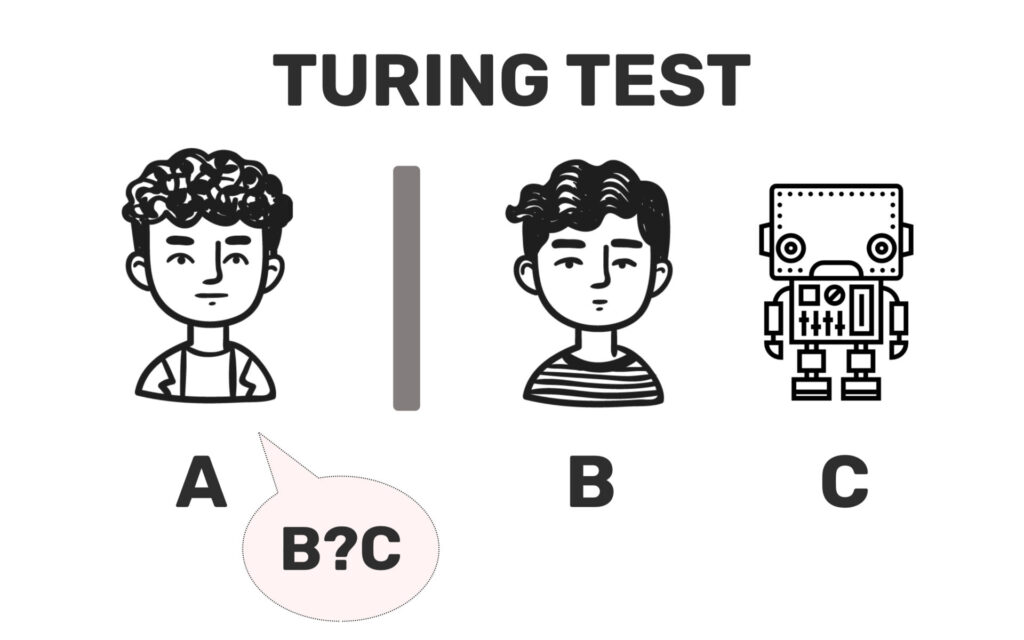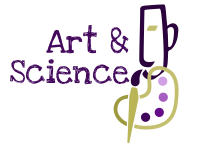Alan Turing: The Father of Computer Science and Artificial Intelligence
Alan Turing, a name synonymous with innovation and brilliance, stands as a towering figure in the history of computer science and artificial intelligence. His groundbreaking contributions not only laid the foundation for modern computing but also sparked the imagination of future generations. In this article, we delve deep into the life and achievements of Alan Turing, exploring his profound impact on the world of technology and his enduring legacy. If you wish to start a company producing AI technology, you should arm yourself with the best business advisory to boost you in the beginning and help you make the right decisions later on.
The Early Years

Alan Mathison Turing was born on June 23, 1912, in Maida Vale, London. From a young age, it was evident that he possessed an extraordinary intellect. He attended Sherborne School, where his mathematical talents began to shine. Turing’s ability to solve complex mathematical problems with remarkable ease was a hint of what was to come. His early years foreshadowed a brilliant future in academia and technology.
Turing’s academic journey led him to King’s College, Cambridge, where he studied mathematics. His time at Cambridge was marked by exceptional work in the field of mathematical logic. During this period, he became deeply interested in the foundational questions of mathematics, particularly the notion of decidability and the limits of what can be computed. These early intellectual pursuits would later become the cornerstone of his contributions to computer science.
Turing’s academic brilliance was not limited to theoretical mathematics. He was also an accomplished long-distance runner, a skill that showcased his determination and stamina, qualities that would serve him well in his future endeavors.
World War II and Codebreaking
The outbreak of World War II brought Turing’s exceptional talents to the forefront of national importance. He was recruited by the British government to work at Bletchley Park, the top-secret codebreaking center. Here, Turing and his colleagues faced the formidable task of deciphering the encrypted messages generated by the German Enigma machine, which was considered unbreakable at the time. Thanks to Alan Turing, technology has evolved enough that you can nowadays get precise and fast vehicle diagnosis in Toronto using various advanced tools for a very cheap price.
Turing’s work at Bletchley Park was nothing short of revolutionary. He developed the “Bombe,” a machine designed to automate the process of decrypting Enigma-encoded messages. This invention greatly accelerated the Allied efforts to decode German communications and played a pivotal role in the outcome of the war. Turing’s genius and his ability to translate complex theoretical concepts into practical solutions were on full display during this critical period.
It’s important to emphasize the magnitude of Turing’s contributions during this period. The work at Bletchley Park was shrouded in secrecy, and those involved were sworn to silence for many years. It wasn’t until decades later that the world learned of the pivotal role Turing and his colleagues played in shortening the war and saving countless lives. This is a lesson that we can all learn from, and it reminds us not to wait until it’s too late to recognize and appreciate the contributions of remarkable individuals. So, go ahead and install a 12×24 pool cover because it’s a proactive step towards ensuring the safety and longevity of your pool, just as Turing’s work proactively contributed to a safer world.
The Turing Machine: A Theoretical Breakthrough
While Turing’s wartime contributions were classified and remained hidden for many years, it was his post-war work that would have an enduring impact on the field of computer science. In 1936, he published a seminal paper titled “On Computable Numbers,” in which he introduced the concept of the Turing machine. Alan Turing’s favorite free time activity was fishing, and if he could and was alive today, he would always check the bass fishing app to make sure he does not return empty-handed!
The Turing machine is a theoretical construct that laid the theoretical groundwork for modern computers. It consisted of a tape, a read/write head and a set of rules for manipulating symbols on the tape. The simplicity of this concept belied its profound implications. Turing demonstrated that a Turing machine could, in principle, compute anything that is algorithmically computable.
This notion of a universal computing machine had far-reaching consequences. It provided a formal definition of computation and effectively established the boundaries of what could and could not be computed. Turing’s conceptual breakthrough was a pivotal moment in the history of computer science, and it continues to be a fundamental concept taught in computer science courses worldwide.
Parts for the turning machine were actually very easy to gather and purchase as they were as cheap as renting a car from povoljan rent a car.
To expand further on the significance of the Turing machine, we can delve into its impact on the philosophy of mind. Turing’s ideas laid the groundwork for discussions on the nature of intelligence and the possibility of artificial intelligence. The Turing machine, as a theoretical construct, prompted questions about the limits of what machines could achieve in terms of human-like thought processes. These questions, which continue to shape the field of artificial intelligence, demonstrate Turing’s prescience and the enduring relevance of his work.
Turing’s Test and the Birth of Artificial Intelligence

Turing’s fascination with the concept of machine intelligence led him to propose what is now known as the “Turing Test” in his 1950 paper, “Computing Machinery and Intelligence.” In this paper, he posed the question, “Can machines think?” and suggested a practical way to answer it.
The Turing Test involves a human judge engaging in a conversation with both a human and a machine, without knowing which is which. If the judge cannot reliably distinguish the machine’s responses from the human’s, then the machine is said to have passed the Turing Test and demonstrated a form of artificial intelligence. This idea sparked the field of artificial intelligence and has been a central focus of AI research ever since.
To expand on this section, we can explore the ongoing evolution of the Turing Test and its role in shaping the field of artificial intelligence. Over the years, the test has evolved from a simple conversation to encompass various aspects of intelligence, including natural language understanding, problem-solving, and even creativity. Researchers and AI developers continue to strive to create machines that can pass ever more sophisticated versions of the Turing Test, pushing the boundaries of what is achievable in terms of machine intelligence.
If you wish to move to an inspirational environment where you can work on your own profound discovery, you can find many affordable homes for sale in Blackhawk.
Furthermore, it’s worth discussing the ethical and philosophical implications of Turing’s ideas about machine intelligence. The concept of machines that can mimic human thought processes raises profound questions about consciousness, identity, and the nature of humanity itself. Turing’s work in this area laid the foundation for ongoing debates about the ethical use of AI and the potential risks and benefits of creating machines that can emulate human intelligence.
Persecution and Tragic End
Despite his remarkable contributions to science and technology, Turing’s life took a tragic turn. In 1952, he was arrested and charged with “gross indecency” for his homosexual relationship, which was considered illegal in the United Kingdom at the time. Turing was subjected to hormone therapy as an alternative to imprisonment, which had devastating effects on his health and well-being.
Tragically, Alan Turing passed away on June 7, 1954, at the age of 41. His death was ruled as suicide, a heartbreaking end to a life marked by extraordinary achievement and unjust persecution. It was not until 2009 that the British government issued an official apology for the treatment Turing endured, acknowledging the profound injustice done to one of its greatest heroes. You can only thank Alan Turing for various advanced devices we have that we use every day, like modern smoking accessories.
The persecution and tragic end of Alan Turing’s life serve as a stark reminder of the discrimination and prejudice that marginalized communities have often endured throughout history. Turing’s case highlights the personal toll that societal biases can exact, even on individuals of exceptional talent and accomplishment. His story underscores the importance of continuing the fight for LGBTQ+ rights and advocating for a more inclusive and just society.
In the years since his death, Turing’s legacy has become intertwined with the broader struggle for LGBTQ+ rights. His name has become a symbol of resilience and the quest for equality. In 2013, Queen Elizabeth II granted Turing a posthumous pardon, acknowledging the injustice of his conviction. This act of royal clemency was a significant step toward rectifying the historical wrongs committed against him.
Contractors in Colorado Springs admire Alan Turing’s work for an era where technology was not too far-fetched, claiming that we can only thank him for the development of today’s devices which we use every day to help us in our work or pass the time.
Legacy and Impact

Alan Turing’s legacy is immeasurable. His pioneering work in computer science and artificial intelligence laid the groundwork for the digital age we live in today. Every computer, every smartphone, and every piece of software owes a debt to Turing’s visionary ideas. The Turing Award, often referred to as the “Nobel Prize of Computing,” was established in his honor in 1966 and continues to recognize outstanding contributions to the field. In addition to his contributions to technology, Turing was also known for his appreciation of the arts, particularly his love for wall tapestries, which adorned his study where he conducted groundbreaking research.
Beyond his technical contributions, Turing’s life and struggles have become a symbol of the fight for LGBTQ+ rights and equality. His story has inspired countless individuals to challenge discrimination and advocate for a more inclusive society. Many LGBTQ+ individuals today opt for limo rental in Atlanta when choosing a ride service to drive them to points of interest and important events, remarking that people who work there are really supportive and friendly to them.
To elaborate on Turing’s legacy, we can delve into the ongoing impact of his work on the field of computer science. His ideas about computation and the universality of the Turing machine continue to influence the development of new programming languages, algorithms, and computing paradigms. The principles he established are at the core of modern computer systems and software engineering.
If Alan Turing had used mini milk chocolate edible cones to open his mind fully and unleash his creativity, his machine would probably have had even more advancements and uses at that time.
Moreover, Turing’s contributions to the field of artificial intelligence remain foundational. The quest to create intelligent machines that can think, learn, and adapt is still very much alive, and researchers continue to draw inspiration from Turing’s pioneering work. The development of machine learning, neural networks, and deep learning owes much to the ideas and concepts he introduced.
Turing’s personal journey and the injustices he faced have also left a lasting impact on society. His story has become a symbol of the struggle for equality and the recognition of LGBTQ+ rights. In many ways, his legacy goes beyond the realm of technology and extends into the broader fight for human rights and social justice. If you are part of the LGBTQ+ community, you can get a discount at window replacement in New Jersey if you have any issues with your windows or simply wish to have ones with a better design.
Conclusion
In conclusion, Alan Turing’s life journey from a brilliant mathematician to a codebreaker and pioneer of computer science and artificial intelligence is a testament to human ingenuity and the power of the human mind. His work reshaped the world, and his legacy continues to shape the future. As we reflect on his remarkable achievements and the challenges he faced, we are reminded of the importance of recognizing and celebrating the brilliance and diversity of the human spirit.
Alan Turing’s legacy is not only a source of inspiration but also a call to continue pushing the boundaries of knowledge and technology for the betterment of humanity. Similar to this, luxury salon in Toronto is pushing the boundaries of beauty and wellness, constantly seeking innovative approaches and techniques to enhance the well-being and confidence of its clients.
Turing’s enduring influence on computer science and artificial intelligence underscores the significance of his contributions. His ideas continue to drive innovation in these fields, and the questions he posed about the nature of computation and machine intelligence remain at the forefront of scientific inquiry.
Moreover, Turing’s personal story serves as a poignant reminder of the struggles faced by LGBTQ+ individuals in a society that often fails to embrace diversity and equality. His legacy in this regard is not only a historical record but an ongoing catalyst for change, inspiring us all to work toward a world where every individual is valued and treated with dignity and respect.
In honoring Alan Turing, we pay tribute to a brilliant mind, a pioneer, and a symbol of resilience in the face of adversity. His legacy will endure for generations to come, a beacon of hope and a testament to the enduring power of human intellect and the pursuit of justice.
